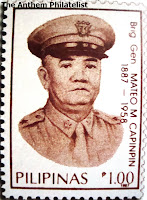Famous Cebuano Cubist Painters
In the Philippines, the best known cubist painter is the National artist from Pampanga, Vicente Silva Manansala. He was of the first Abstractionists in the Philippine art scene. His paintings depict a nation in transition, an allusion to the new culture brought by the Americans. Manansala together with Fabian de la Rosa are among the best-selling Philippine artists in the West.
Most of the other well known Cubist like Jose Joya and Ang Kiukok are from Luzon and Mindanao. Let us now look at the best cubist artists from Cebu.
1. Celso Duazo Pepito- (Spiritual Cubist) He is in the forefront of Cubism in Cebu. A renowned and well-respected cubist, he is one of the few elite living artists in the Philippines that can command a seven figure price for their artworks. Yet, despite his many successes, he remains a simple and humble person. He was born in Daan Bantayan, Cebu, relocated to Bukidnon, and came back in 1977 to study a Degree of Fine Arts in UP Cebu where he graduated in 1981. Since then, he has settled in Cebu where he pioneered Cebu Artist Inc. (CAI) in 1993 and their gallery CAI Art Gallery- the first online art gallery in the Philippines. He also established ArtPortalCebu gallery ArtPortalCebu in Consolacion, Cebu.
Looking at paintings of Pepito, one is made aware of common theme running through them: love of God, love of family, and love for country. Pepito's paintings reflect a "strong spiritual commitment to a continuing apostolate through his art. He is an unwavering believer that positive change in society starts in the family, his works always show and depict family values and traditions, and a spirit of nationalism exemplified by subjects that are striving for self-reliance and dignity through hard work and labor".
He is color blind, Dapat Alam Mo-Color Blind Cebuano Artist yet strongly believes that "God uses deficient instruments to showcase His power".
2. Boy Carvajal Kiamko- (Intellectual Cubist) was born in Cebu City. He is a visual artist that uses different mediums- acrylic, oil and and pen in his artworks. His monochromatic collection reveals a distinct style that demonstrate mastery and boldness in his art. He also dabbles in Seurat-like pointillism. He has also done great sculptures. Three of his sculptures titled “Double Kara”, “RH Bill” and “Pork Barrel Scam” are imaginative impressions on contemporary and controversial issues.
His outstanding murals of the images of Cebu can be seen on the wall of the City Public Library and in the lobby of the Development Bank of the Philippines in Cebu City.
3. Edgar Mojares- (Soul Cubist) is a Cebu-based artist who studied art at Cebu's UPCC Fine Arts Program in 1975. A reclusive painter with several shows in joint art exhibits, he never does one man shows until his entry to the Web in CAI gallery, which is fondly considered by him as his first one-man show. However informal or unusual in launching it in cyberspace, this exhibit CAI Mojares Exhibit presents an anthology of his body of works which spans fifteen years, roughly running between the late 70s to early 90s. The late Mojares constantly experiments, invents and sometimes exploits indigenous raw materials like basket weave and coco fiber at the expense of a possible obsolescence. Even in the pen & ink drawings he infuses an unconventional method, and so with his painting techniques, the prints, collages and other innovative works. Mojares' outstanding cubist works are mostly done in collages. He is regarded as the main proponent of Cebuano synthetic cubism.
4. SYM Mendoza- (Mind Cubist) SYM is an acronym for Sofronio Ylanan
Mendoza. Born in 1934, in a small rural town of Putat Bagong Bayan in
Cebu, Philippines. He started drawing before he could write at the age of 5. He loves to draw comic book characters. He was mentored by Martino Abellana, the dean of Cebuano painters. He was more into what he called "Neo-Classical Cubism"- adding complicated elements in his art. “A painting
is a manifestation of what is inside your brain, inside your mind,” he explains. The composition of his work is quite complicated; various
elements come into play to produce a grand design. “Grand design means
that you manipulate small elements, big elements and different
movements to create a design to express something.” He founded the Dimasalang artist group in 1968 which included Romulo Galicano. He immigrated to Canada in 1981 and died in 2021 at the ripe old age of 87.











